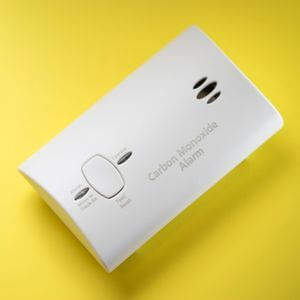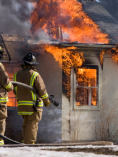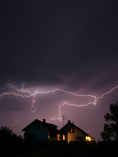Carbon Monoxide Poisoning

A 72-year-old man rarely missed his Wednesday afternoon card games, and if he had to miss one, he would tell his friends ahead of time. When he didn’t show up one Wednesday, his friends checked on him and found him dead in his bedroom with his car running in the garage. His wife was also affected but was still alive. She explained that he had push button start on his car, and when they got home the night before he must have forgotten to hit the stop button to turn his car engine off. She said he had forgotten before, but it was when they were in a parking lot or outside, and she never thought it would happen in their garage. She had gone in the house before he did, so she didn’t notice that the car was still running. The running engine caused a buildup of carbon monoxide in the house, which made her sick and proved to be fatal for him.
What is Carbon Monoxide?
It is a colorless and odorless gas that can be fatal. With too much carbon monoxide in the air, the oxygen in your red blood cells is replaced with the carbon monoxide, which reduces the amount of oxygen to the brain and causes a feeling of intoxication and lack of reasoning. This gas is commonly found when burning fuel in cars, fireplaces, grills, generators and more. It may be tempting to warm up your car in the garage in cold weather, but this can have fatal consequences. You should never start your car in a closed garage because of the high concentrations of carbon monoxide that build up in a small, enclosed spaces. The buildup of carbon monoxide could make the inside of your home poisonous for people and animals. It’s also important to never run your car with a blocked tail pipe because this prevents exhaust from exiting which leads to a buildup of carbon monoxide inside of your car. In winter weather, snow and ice can build up in your tail pipe causing a blockage so that is another thing to keep in mind.
Since carbon monoxide has no color, small or taste, it is important to know some signs of potential leaks in your home. If you have gas appliances, you may notice yellow or orange flames coming out instead of the normal blue flame. Dark and black staining on or around your gas appliances may also be present. A pilot light that frequently blows out when it’s usually reliable can indicate a carbon monoxide leak. To prevent a dangerous buildup of this gas in your home, never use a gas range or oven for home heat, and don’t run generators or any gasoline-powered engines inside of your home.
Symptoms
Carbon monoxide poisoning symptoms are not always evident if it is a low-level exposure. Low-level exposure symptoms include headache, dizziness, weakness, upset stomach, nausea, chest pain and confusion. The more gas that is inhaled, the worse the symptoms will get, including fainting or even death. Prolonged exposure can cause brain damage that leads to memory problems, confusion and difficulty concentrating. Children, pregnant women and people who already have heart disease and respiratory problems are more at risk of carbon monoxide poisoning.
Prevention
To catch carbon monoxide poisoning in your home, install a carbon monoxide detector to detect increasing gas levels in your home. Carbon monoxide detectors use multiple types of sensors to detect the gas in the air. If these detectors go off, open all the windows in your home to allow fresh air to circulate throughout your house. Everyone should evacuate the house and you should call emergency services. If you install a battery-operated detector, replace the batteries every six months to ensure that it is working properly.
The CDC reported that at least 430 people in the U.S. die from accidental carbon monoxide poisoning and around 50,000 people visit the emergency department each year. Taking the simple step of installing carbon monoxide detectors can save lives.
Share This:-
Fire Safety 101
 Learn More
Learn MorePrepare for the unexpected. Learn to safeguard yourself and loved ones from potential fire hazards.
-
Lightning Strikes: Safeguarding Your Home
 Learn More
Learn MoreNature is unpredictable. Don’t wait to enforce these safety measures when lightning strikes.
-
Don't Be Left in the Dark
 Learn More
Learn MoreKeep your spirit up when the lights go out! Learn how to handle a power outage with confidence.
